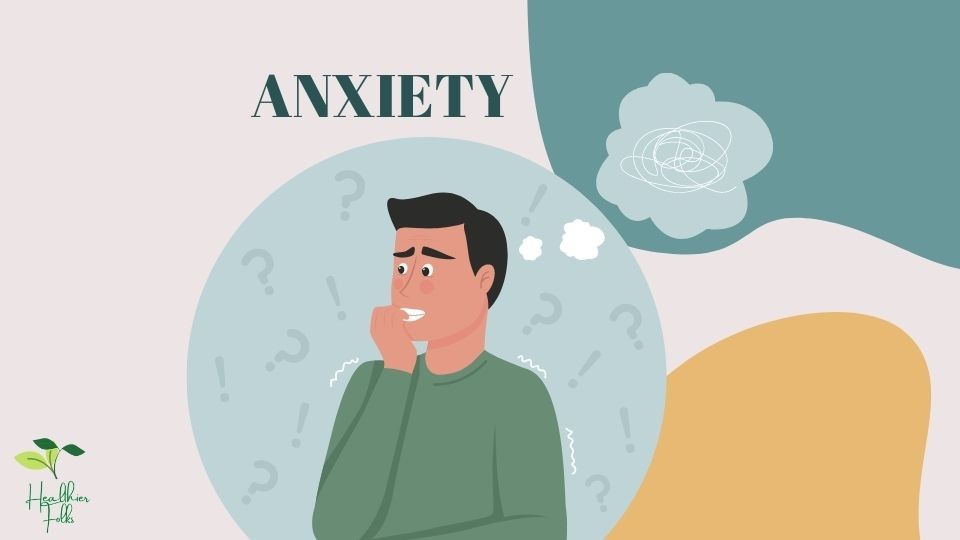Health
How to stop anxiety chills: Effective strategies for calmness

Anxiety chills are a common physical response to intense stress or fear, leaving individuals feeling shaky and cold even in warm environments. Understanding how to stop anxiety chills is essential for those who experience this symptom, as it can disrupt daily activities and impact overall health.
This article explores the causes of anxiety chills and offers effective strategies to help manage and alleviate them.
What are anxiety chills?
Anxiety chills occur when the body reacts to stress by triggering the fight-or-flight response. During this process, the body releases adrenaline, which can cause a drop in body temperature and lead to chills or shivering.
This response is often accompanied by other symptoms of anxiety, such as rapid heartbeat, sweating, and muscle tension. While anxiety chills are not harmful, they can be uncomfortable and distressing.
Causes of anxiety chills
Several factors contribute to anxiety chills. The release of stress hormones like cortisol and adrenaline increases blood flow to essential muscles, reducing circulation to the skin and causing a sensation of coldness. Muscle tension, a common symptom of anxiety, can also lead to chills or shivers.
In some cases, hyperventilation during a panic attack disrupts oxygen levels in the blood, intensifying the feeling of coldness.
How to stop anxiety chills
Several strategies can help reduce or stop anxiety chills. These techniques focus on calming the mind, relaxing the body, and regulating the body’s physical responses to stress.
1. Practice deep breathing exercises
Controlled breathing helps regulate oxygen levels and calm the nervous system. Techniques such as diaphragmatic breathing or the 4-7-8 method can slow the heart rate and reduce the body’s stress response. Breathing deeply for several minutes can counteract hyperventilation and diminish chills.
2. Use progressive muscle relaxation
Progressive muscle relaxation involves tensing and relaxing muscle groups to relieve tension and calm the body. Starting from the toes and working upward, this technique helps release physical tension caused by anxiety, reducing the sensation of chills.
3. Stay warm
Layering clothing, using a blanket, or drinking warm beverages can help alleviate the physical sensation of chills. Staying warm reassures the brain that the body is not in danger, reducing the stress response.
4. Engage in mindfulness techniques
Mindfulness practices such as meditation or grounding exercises shift focus away from anxiety and into the present moment. Techniques like focusing on your breathing or paying attention to sensory details can reduce stress and the accompanying chills.
5. Address hyperventilation
If hyperventilation contributes to chills, practicing controlled breathing is essential. Breathing into a paper bag for a short time can help restore carbon dioxide levels in the blood, easing symptoms.
6. Distract yourself
Engaging in a calming or enjoyable activity, such as listening to music, drawing, or watching a favorite show, can help distract the mind from anxious thoughts and reduce the physical symptoms of anxiety.
7. Hydrate and eat well
Dehydration or low blood sugar can exacerbate anxiety symptoms, including chills. Drinking water and eating a balanced meal or snack can stabilize blood sugar levels and support overall physical well-being.
8. Use visualization techniques
Visualizing a calming scene, such as a beach or forest, can help redirect the mind and soothe anxiety. By focusing on peaceful imagery, individuals can reduce stress and its physical effects.
9. Exercise regularly
Regular physical activity releases endorphins, which improve mood and reduce stress. Light exercise, such as walking or yoga, can also help release muscle tension and regulate body temperature.
10. Seek professional help
If anxiety chills persist or interfere with daily life, consulting a mental health professional is recommended. Therapies such as cognitive-behavioral therapy (CBT) or exposure therapy can provide tools to manage anxiety effectively.
Lifestyle changes to prevent anxiety chills
Making long-term lifestyle changes can reduce the frequency and intensity of anxiety chills. Developing a consistent sleep schedule supports emotional regulation and resilience against stress. Reducing caffeine and alcohol intake minimizes the risk of anxiety spikes and physical symptoms.
Practicing regular relaxation techniques such as yoga or meditation helps maintain a calm state. Building a strong support system of friends, family, or support groups provides reassurance and reduces feelings of isolation.
When to seek help
While anxiety chills are typically harmless, persistent or severe symptoms may indicate an underlying issue. If chills are accompanied by other unexplained physical symptoms, it is important to consult a healthcare provider. If anxiety significantly impacts daily functioning or quality of life, seeking therapy or counseling can be beneficial.
To summarize: How to stop anxiety chills
Understanding how to stop anxiety chills involves addressing both the mental and physical aspects of anxiety. Techniques such as deep breathing, muscle relaxation, and mindfulness can provide immediate relief, while long-term lifestyle changes and professional support help prevent recurrence.
By adopting these strategies, individuals can manage anxiety chills effectively and improve overall well-being.
